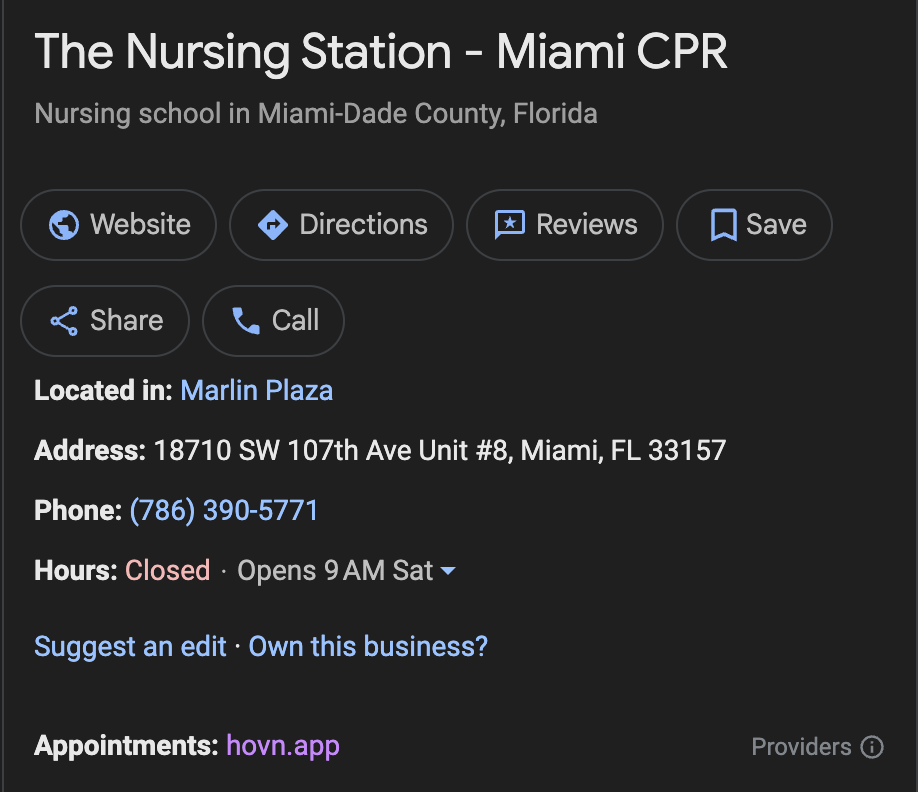Your CPR SEO Strategy Is Backwards (And Costing You Money)
How metro-wide SEO burns budget while hyperlocal customers book your competitors — SitRep #004

The Real SEO Problem
Every training provider chases the same prize: “Houston CPR class” or “Chicago BLS certification.” The logic feels bulletproof: cast a wide net, capture more leads, grow faster.
Here’s what’s actually happening: you’re bleeding money on unqualified traffic while your best prospects can’t find you.
The fundamental flaw runs deeper than bad keywords. Most cpr training locations sit 15-30 minutes outside major cities, yet they optimize for downtown search terms. Google doesn’t know where you actually are. Students can’t find the closest option. Everyone loses.
Why the System is Broken
Your booking tool wasn’t designed for local discovery. Most providers run on Class Management Software or basic calendar tools like Calendly and Acuity. These systems were built for virtual meetings, not physical locations. To book time, not get someone to your door.
They store your address as plain text—“123 Main St, Dallas, TX”—instead of GPS coordinates and Schema.org markup. That’s the code that tells Google exactly what type of business you are and where you operate.
Google knows you exist. It just doesn’t know where you are.
Search and AI can’t connect the dots. Google Maps, local directories, and proximity search all depend on structured location data you’re not providing. Your students are searching blind. Your classes are invisible.
This is part of a larger infrastructure problem we’ve covered before—the tools weren’t built for discovery.
What It Looks Like in the Wild
Picture Houston’s training landscape. Twenty-plus CPR centers scattered across Katy, The Woodlands, Sugar Land, and Pearland. Each one targets “Houston CPR class” because that’s where the search volume lives.
But here’s the reality: when someone in Katy searches “Houston CPR class,” they’re sitting 30 minutes from downtown and 45+ minutes from providers in Pearland. When they see a Pearland CPR ad, that’s not a qualified lead—that’s a frustrated student who’ll abandon the search.
Metro keywords are like putting a billboard on a freeway 10 miles from your store. You’ll get seen, but not found. Traffic without proximity is just expensive noise.
The New Model: Win Local First
Flip the strategy. Build proximity-first dominance instead of chasing reach-first volume.
Start hyperlocal, then expand outward. Win everyone within 5-10 minutes of your location first. These prospects pay premium prices for convenience, drive loyalty through repeat business, and refer their neighbors. Once you own your backyard, push the perimeter.
“But won’t this reduce my total leads?”
You don’t need thousands of leads. You need enough qualified leads to fill classes with people willing to pay your price. That means enough volume to turn away bargain hunters and command premium pricing.
Think about buying gas. You’ll pay extra for the station around the corner or just off the highway exit. You only drive further for significant discounts. Don’t be the discount gas station in the training business.
Hyperlocal wins on four fronts:
10-20% pricing premiums
Higher conversion rates
Relationship-driven loyalty
Competing against 2-3 local providers instead of 20+ metro-wide.
Tactical Playbook: How to Fix It
Remember, student experience starts at search, not in the classroom. Your exact address is the first step in that journey.
Get precise:
Use exact addresses instead of “Houston, TX.”
Use a platform that leverages Schema.org LocalBusiness markup.
Set your Google Business Profile to reflect precise location and service area.
Link your Google Business Profile appointments field directly to your class listing page.

Create neighborhood-level content:
Write for “South Katy CPR training” instead of “Houston BLS certification.”
Build landing pages for specific communities, shopping centers, and school districts.
Target local landmarks: “CPR classes near Memorial City Mall.”
Own local discovery platforms.
Claim your spots on Nextdoor, local Facebook groups, and community boards.
Optimize for Apple Maps and Yelp with neighborhood-specific tags.
Partner with local businesses for cross-referrals.
Go Broad with Caution
Reserve metro keywords for awareness only.
Use broad terms for blog content and brand building.
Convert with hyperlocal landing pages and offers.
When Metro Targeting *Does* Work
If you operate 10+ locations across a metro area or have deep brand recognition like American Red Cross, broad targeting makes sense. You have the inventory and resources to serve entire markets effectively.
But single-location or small-chain providers competing metro-wide are burning resources. You’re fighting organizations with 10x your budget for keywords that deliver unqualified traffic.
How We Built for This
At Hovn, every class gets geotagged to exact coordinates. Every provider listing includes structured location data.
The result: higher-quality matches, better conversion rates, and training centers that actually serve their local communities instead of chasing digital phantoms.
Your next move is simple. Map your current SEO footprint. Are you targeting areas you can’t realistically serve? Are hyperlocal prospects finding competitors instead of you?
The fix isn’t complicated, but it requires changing how you think about reach versus relevance.
Rethinking Reach vs. Trust
The training industry borrowed e-commerce SEO tactics without considering one fundamental difference: your students have to physically show up.
Geographic precision isn't optional. It's how you get found and booked.
Stop competing for metro vanity metrics. Start owning your neighborhood. The students closest to you are worth more than the ones furthest away, and they’re infinitely easier to find when you make it clear where you actually are.
Ready to see what discovery-first infrastructure looks like?
Book a 15-min platform demo and I'll show you:
How every class gets geotagged for hyperlocal discovery
Why providers see more organic traffic
What happens when your booking system talks to Google
Have questions first?Ask in the community chat. Founders and other providers answer. It’s open. → Join the Chat


